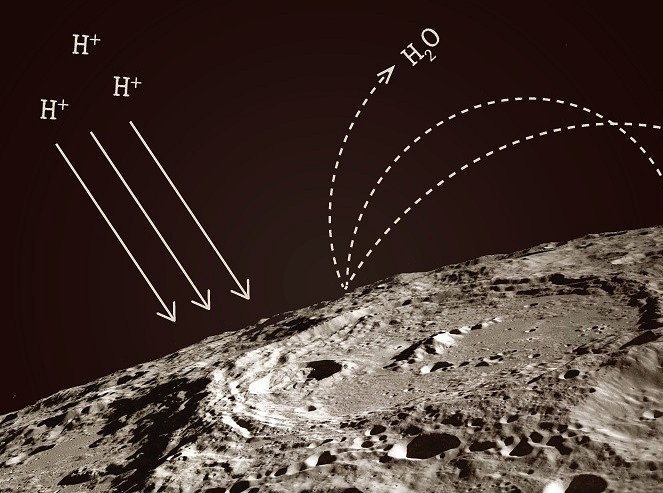Lunar water, its origin and kinetics
Type of project: national project
Duration: 2024 - 2027
 Project leader: Dr Jurij SimčičCode: N1-0383 Coworkers: Doc. Dr Klemen Bučar, Assist. Prof. Dr Sabina Markelj, Dr Boštjan Jenčič, Matevž SkobeExternal coworkers: Dr Mirijam Vrabec, Tim Sotelšek, Dr Jože MedvedPartners: Jozef Stefan Institute,
Faculty of Natural Sciences and Engineering (Geology department, Department of Materials and Metallurgy), University of Ljubljana
Infrastructure: MIC - Microanalytical Centre
Project leader: Dr Jurij SimčičCode: N1-0383 Coworkers: Doc. Dr Klemen Bučar, Assist. Prof. Dr Sabina Markelj, Dr Boštjan Jenčič, Matevž SkobeExternal coworkers: Dr Mirijam Vrabec, Tim Sotelšek, Dr Jože MedvedPartners: Jozef Stefan Institute,
Faculty of Natural Sciences and Engineering (Geology department, Department of Materials and Metallurgy), University of Ljubljana
Infrastructure: MIC - Microanalytical Centre 
The origin and transport of water on the Moon have been the subjects of many studies over the last few decades. Nevertheless, many questions remain unanswered, particularly the absence of a large reservoir of subsurface water predicted by many models, that would enable water molecules to be observed in the tenuous lunar exosphere.
Recent findings from the analysis of impact glass beads, delivered to the Earth by the Chang’e 5 mission, suggest that this material, scattered across the surface of the moon, is capable of producing and storing a large amount of water after its surface is exposed to solar wind bombardment. The water molecules contained are also easily extractable during the lunar daytime, which would support the idea that impact glass beads are indeed the missing reservoir which supplies the exosphere on the Moon with water molecules.
We are conducting a series of laboratory experiments to quantify the ability of impact glass beads to produce and retain water, and to measure the corresponding diffusion and extraction rates in the temperature environment dictated by the lunar diurnal cycle.
Our laboratory experiments include exposing the earth analogues of impact glass beads, such as tektite and olivine, and vacuum oven made lunar glass to deuteron bombardment, followed by pulses of infrared laser light to simulate micrometeorite impacts. By applying Nuclear Reaction Analysis (NRA), Elastic Recoil Detection Analysis (ERDA) and Secondary Ion Mass Spectrometry (SIMS) we can determine how water molecules in samples are created, what is their depth profile, and how they migrate towards the surface once they are exposed to the temperatures of the diurnal cycle.
The results of these measurements will allow us to constrain the theoretical models which describe the dynamics of water molecules from their creation in the lunar regolith to their creation in the lunar regolith to their desorption into the exosphere.